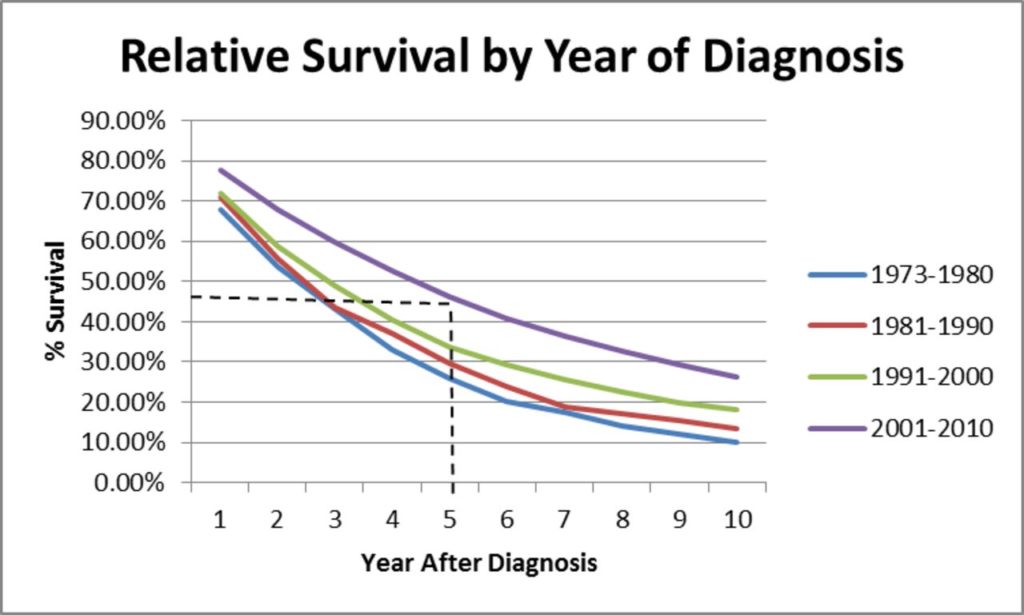Leave a Comment:
2 comments
[…] Monoclonal Gammopathy of Undetermined Significance aka MGUS […]
Reply[…] Monoclonal Gammopathy of Undetermined Significance aka MGUS […]
Reply
Learn how you can stall the development of full-blown Multiple Myeloma with evidence-based nutritional and supplementation therapies.
Click the orange button to the right to learn more.

The challenge of a diagnosis of MGUS is both positive and negative. A diagnosis of pre-myeloma is a diagnosis of a “blood disorder.” It is not a diagnosis of cancer. The positive is that you don’t have cancer. The negative is that this diagnosis may lead to an incurable blood cancer.
Chances are, your oncologist told you to do nothing. To watch and wait. Many people don’t want to wait for “the other shoe to drop,” as they say. The post below was written by a client of the PeopleBeatingCancer Pre-Myeloma cancer coaching program. Mark, not his real name, is an elderly gentleman with MGUS. Mark lived with MGUS for years until his pre-myeloma blood markers increased enough that Mark wanted to see if he could lower his risk of progressing to full-blown MM.
W’hile Mark is only one example of an MGUS patient, he is typical in many ways. Mark wants nothing to do with toxic therapies. At his age, quality of life is far more important than quantify of life. Based on his comment’ below, Mark is on track to enjoy both quality and quantity of life.
To learn more about evidence-based therapies that can help you prevent the development of a Multiple Myeloma diagnosis, please watch the short video below:
Have you been diagnosed with a form of pre-myeloma? Scroll down the page, post a question or comment and I will reply to you ASAP.
Thank you,
David Emerson
Recommended Reading:
Greetings, David:
Some two months ago, I moved into a fine Independent Living facility which is virtually next door to Eckherd College where there are many cultural and entertainment activities to make living here at the southern tip of the St. Petersburg, Florida peninsula very satisfying. Top of my medical needs was to select the oncologist to follow my pre-myeloma condition; in this, I chose the one who first diagnosed me with MGUS back in 2008 when I lived in St. Petersburg up until mid-2010. Although this doctor is not part of Moffitt Cancer Center, I am very comfortable with him and he was aware of, and kindly disposed to, my use of Curcumin as a potential anti-myeloma agent.
I am writing you now because I have the results of blood drawn on 2/1/18, as a four-month follow-up to
blood drawn previously on 10/3/17 in New York. You will recall from the data presented in my email of Oct. 18, 2017, the daily consumption of 400 mg Curcumin had a limited beneficial effect on the M-spike and the Kappa- lambda FLC ratio; their plots against time of relapse between successive blood analyses curved downward but approached a plateau. As I noted, to overcome this limiting effect, I increased the daily dose to 800 mg on 10/3/17, and you agreed with that decision. I am now happy to report that three myeloma markers showed definite improvement over the results shown previously for 10/3/17, thus substantiating the view that the full potential for Curcumin supplementation requires higher doses. Empirical evidence for that view is the
use by some MMers of 6-8 gm Curcumin per day.
Here is a comparison of the markers for 10/3/17 and 2/1/18 analyses, respectively:
M-spike: 1.76 dropped to 1.36.
The extent of this decline is quite remarkable when it is noted that in the three years (2008-10) prior to coming to New York, my M-spike ranged from 1.0 (when first diagnosed with MGUS) to 1.7, after which it continued upwards until it reached 2.40 on 3/31/17. It was at that point, at your suggestion, I started consuming 400 mg Curcumin daily until the discovery of its limiting effect, and this was followed by the new regimen of 800 mg Curcumin to date, effective 10/3/17.
Kappa-lambda FLC ratio: 62.11 decreased to 53.42.
This drop was not as dramatic as that in the M-spike. It may be noted that the latest determination is
roughly the same as that on 5/1/17 (52.18) when the M-spike of 1.98 was much higher than the most
recent value (1.36).
Beta-2-microglobulin: 3.21 dropped to 2.63.
The B2M is often considered a marker, and so a decrease is a welcome finding.
My CBC appears to be stable, but my HgB is still low. Perhaps, I’m not eating enough red meat, though I manage a careful anti-myeloma diet and do eat a lot of nuts (especially, pistachios) and sunflower seeds which are rich in iron.
Before leaving you with this jumble of dates and data, permit me to ask you a question. I realize you follow a rigorous, comprehensive lifestyle but manage to consume just one tablet Curcumin daily. Do all your other therapeutic approaches contribute so much beneficial effect that a low dose of Curcumin is adequate, even though MMers consume upwards of 8 grams per day? By the way, what specific myeloma markers do you follow regularly as you navigate for years a sustained remission from active disease?
[…] Monoclonal Gammopathy of Undetermined Significance aka MGUS […]
Reply[…] Monoclonal Gammopathy of Undetermined Significance aka MGUS […]
Reply